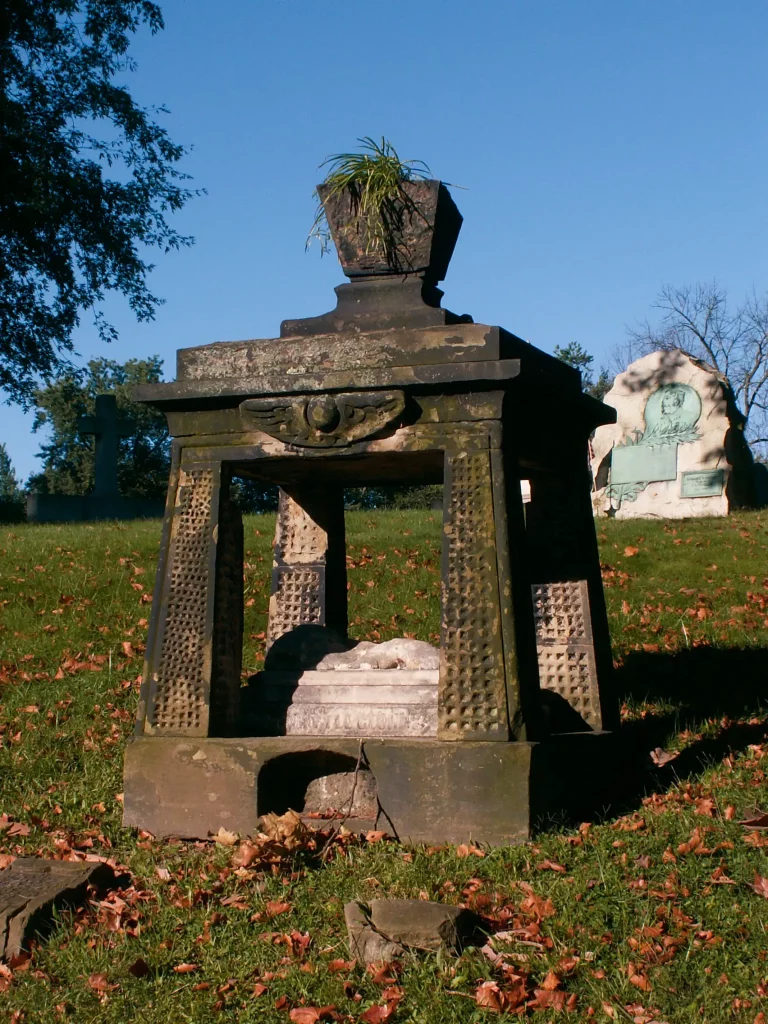
Mr. John Weakly Chalfant died in 1898, but in 1930 his heirs took it into their heads to have the Ecclesiastical Department of Tiffany Studios design this very elegant classical structure, in which he was reinterred. The whole design is clearly meant to show off a Tiffany stained-glass window, but the window was stolen more than thirty years ago.















